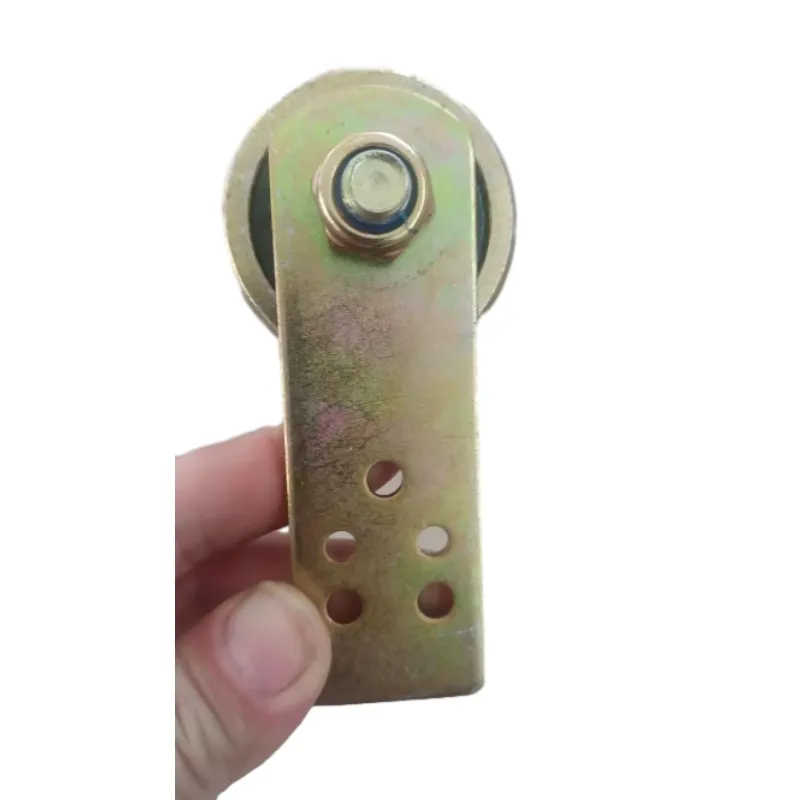
Nov . 08, 2024 09:04 Back to list
Understanding the Differences Between Thrust Bearings and Radial Bearings in Mechanical Systems
Understanding Thrust Bearings and Radial Bearings Key Components in Mechanical Systems
Bearings are critical components in various mechanical systems, facilitating the smooth operation of machines by reducing friction and supporting rotational or linear movement. Among the many types of bearings available, thrust bearings and radial bearings are two fundamental types widely used in engineering applications. Understanding their design, function, and applications is essential for anyone involved in mechanical design and maintenance.
Thrust Bearings
Thrust bearings are specifically designed to handle axial loads—forces that act along the axis of rotation. They can be found in various applications, including automotive transmissions, marine propulsion systems, and industrial machinery. Thrust bearings are essential when the system experiences significant thrust loads, such as those from rotating shafts.
These bearings are classified into several types, including ball thrust bearings, roller thrust bearings, and fluid thrust bearings. Ball thrust bearings utilize balls to distribute the load evenly across the raceways, allowing for easy rotation under axial pressure. Conversely, roller thrust bearings use cylindrical rollers to provide a larger surface area for load distribution, making them suitable for heavier applications.
One of the primary advantages of thrust bearings is their ability to handle high axial loads while maintaining low friction levels. This capability is vital in applications where precision and durability are required, such as in aerospace engineering and high-speed machinery. However, thrust bearings have limitations; they are not designed to withstand significant radial loads, which brings us to the discussion of radial bearings.
Radial Bearings
thrust bearing and radial bearing

Radial bearings, on the other hand, are designed to support radial loads—forces that act perpendicular to the axis of rotation. They are essential components in various mechanical systems, including electric motors, turbines, and conveyors. Radial bearings enable rotating components to function effectively while minimizing wear and tear caused by friction.
The most common types of radial bearings are deep groove ball bearings, angular contact ball bearings, and cylindrical roller bearings. Deep groove ball bearings are versatile and capable of handling both radial and axial loads, making them one of the most widely used bearing types. Angular contact ball bearings are designed to accommodate axial loads in one direction, making them suitable for applications where axial force is expected. In contrast, cylindrical roller bearings can support heavier radial loads due to their unique design, which optimizes contact area.
Applications and Importance
Both thrust and radial bearings play vital roles across various industries. In automotive engineering, for example, thrust bearings are used in gear mechanisms to manage axial loads in the transmission system, while radial bearings ensure the smooth rotation of wheels and engine components. In aerospace, thrust bearings are critical in aircraft engines, managing the extreme forces generated during operations.
Understanding the specific requirements of a given application is key to selecting the appropriate bearing type. Factors such as load direction, load magnitude, speed, temperature, and environmental conditions must be considered.
Conclusion
In summary, thrust bearings and radial bearings are integral components in mechanical design, each serving unique functions based on their load capabilities. Thrust bearings excel in managing axial loads, while radial bearings are essential for supporting radial forces. Knowledge of these bearings allows engineers and technicians to make informed decisions that enhance the performance and longevity of mechanical systems. As technology evolves, the development of advanced materials and designs will likely lead to even more efficient bearing solutions, reinforcing their significance in modern engineering applications.
Latest news
-
Premium Deep Groove Ball Bearings | High Speed & Reliability
NewsAug.29,2025
-
Durable Scaffolding Clamps - Secure & Reliable Tube Connectors
NewsAug.28,2025
-
Common Failures in Thrust Ball Bearings and Solutions
NewsAug.22,2025
-
How Tapered Roller Bearings Can Take Shock Loads
NewsAug.22,2025
-
Angular Bearings in High-Precision Spindles
NewsAug.22,2025
-
The Impact of Misalignment on Cylindrical Roller Bearing Performance
NewsAug.22,2025
